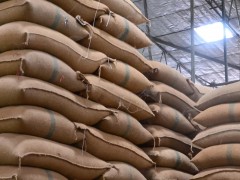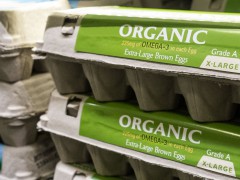Last week’s report that unapproved genetically-engineered (GE) wheat unexpectedly was found growing in an Oregon farmer’s field has brought renewed attention to the issue of genetic crop contamination. The unintended transfer of engineered DNA to non-GE crops could cause economic harm, as evidenced by the fact that Japan – one of the largest importers of US wheat – has temporarily banned imports of US Western White wheat in response to the reported finding in Oregon. At least one lawsuit has already been filed against Monsanto alleging that the Oregon incident has damaged the market for US wheat.
The Oregon finding comes on the heels of the US Court of Appeals for the Ninth Circuit’s recent decision not to overturn USDA’s approval of genetically-engineered alfalfa. That decision is particularly important for its holding that, in determining whether to allow commercialization of new biotech plants, USDA may consider only whether the new plant is likely to be a plant pest, such as by spreading disease to other plants. According to the Ninth Circuit, USDA has no power to consider the potential environmental impact of a GE crop (such as, increased resistance of weeds to herbicide) or the potential economic harms that might result from genetic contamination of organic or other non-GE crops.

Unresolved legal issues create a host of problems for non-GMO farmers
These latest developments suggest that concerns about GE contamination of non-GE crops will only increase. Biotech companies will continue developing GE crops, and absent a change in law, USDA’s power to regulate them will be limited. It is not seriously disputed that incidents of contamination will occur and cause some amount of harm. Rather, the current debate is mostly about who – as between the farmers who use GE technology and the biotechnology companies, on the one hand, and the non-GE farmers, on the other hand – should bear the responsibility and costs of preventing contamination as well as the economic losses resulting from contamination.
In cases involving contamination from unapproved GE crops like the wheat found in Oregon, courts have found that plaintiffs suffered real harms and allowed them to assert negligence and nuisance claims. The plaintiffs harmed by contamination from unapproved StarLink corn and Liberty Link rice recovered large settlements and damage awards. However, such cases represent a departure from the default position that has emerged in the law, which generally imposes the costs of prevention and contamination on the farmers who choose not to use GE technology, rather than on the biotech companies and growers of GE crops.
As explained by University of Illinois law professor A. Bryan Endres the default allocation of costs can be thought of as a rule requiring non-GE farmers to “fence out” GE contamination, rather than requiring GE producers to “fence in” the engineered genes. For example, certified organic producers must take “reasonable” steps, through implementation of their approved organic system plans, to prevent contact with GE material. Such steps may include the use of buffer zones to separate organic from GE crops, testing seeds for GE, timing planting to stagger flowering of organic and GE crops, forming agreements with neighbors to avoid planting GE crops adjacent to organic crops, cutting or mowing alfalfa prior to flowering, and posting signs to notify neighbors of the location of organic fields. The costs of taking such preventive measures ordinarily cannot be recovered through litigation unless a farmer also suffers actual contamination resulting in harm. As demonstrated in the Organic Seed Growers & Trade Association v. Monsanto case, which was decided by the US District Court for the Southern District of New York last year, unless plaintiffs suffer actual contamination resulting in harm, courts are unlikely to find a controversy to be decided.
Similarly, the November 2012 report of USDA’s Advisory Committee on Biotechnology and 21st Century Agriculture (AC21) reflects the default position that non-GE farmers should bear the costs of GE contamination. The report proposes to allow organic and other non-GE farmers to buy a new type of insurance to protect against the economic risks of GE contamination. The report was harshly criticized by the National Organic Coalition (NOC) as allowing “USDA and the agricultural biotechnology industry to abdicate responsibility for preventing GE contamination while making the victim of GE pollution pay for damages resulting from transgenic contamination.”
The lesson here for producers of organic and specialty crops and seeds is that GE contamination is a real risk and, importantly, the law cannot be counted on to protect against such risk. While it may be possible to sue neighboring farmers after GE contamination has already caused harm, litigation is costly, time-consuming, and unpredictable. Farmers of premium-priced, non-GE crops must, therefore, take all feasible precautions to protect themselves from contamination and to insure against risks.

















